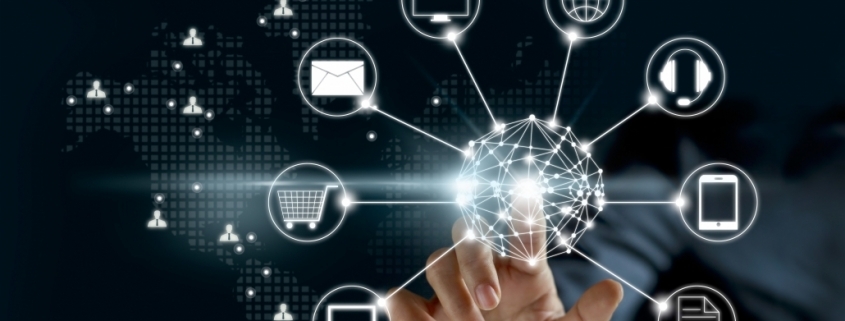WHAT DOES REAL OMNI-CHANNEL SERVICE LOOK LIKE?
Omni-channel. Multichannel. Cross channel. What is the difference and which is more effective at engaging and delighting your customers? Here, BARE International shares an article by for Forbes on What Does Real Omnichannel Service Look Like?
‘Omnichannel emerged as a term for B2C retailers, describing the ability for customers to have a consistent experience over traditional channels and new, information-rich digital channels. In the world of CX, it has come to mean that customers can move from channel of engagement to channel of engagement while always progressing along the customer journey. That means seamless journey continuity, from first touch to checkout, support, returns, and beyond.
There is a hierarchy of customer communication, and they mean different things for customers and agents…
Multichannel
This is the table stakes for modern businesses. Channels have multiplied, and being reachable on more than one is absolutely the bare minimum. Customers expect every business to answer an email, pick up the phone, and respond to a conversation on Twitter. Continuing that conversation across channels is better, and new technologies have made that possible. You can call an agent and have them look up your history and respond over email—though it’s not always smooth or easy. It’s rare to have a conversation with customer service agents and never have to repeat yourself or enter new information. After entering our account details into a phone tree or using a chatbot, we’ll be asked for them again by a live agent, and forced to start the whole process again when calling back—even though logically it seems like all this info should be stored in one place and readily at hand.
Cross channel
Simply being able to communicate is only part of the picture. Communicating vertically with a customer on a single channel does not reflect the way they interact with your business and how they expect you to assist them. Cross channel means a customer can move from one channel to another without completely losing the thread of the journey. You can hang up the phone and then reach out about the same issue over chat on a company’s homepage, and even if you aren’t connected by the same agent, they can pull up the information they need and maintain the interaction without you having to start from scratch.
That’s great and the contextual approach is the key, but it’s still not true omnichannel.
Omni-channel
Real omni-channel requires making the customer the focus, no matter what the channel is. It means that you’re understanding and responding to conversations in real time, not just having a lot of conversations at once. No matter where they contact you, the customer journey has to be progressing—no repeating, no steps backwards. Wherever your customers contact you, it’s crucial that you have the full context of their history with the business. Each interaction has to be pushing the customer journey forward. A customer that’s chatting with an agent on a desktop site can switch to SMS while they’re on the go, pick up the phone and speak to the agent if they need to go into detail, then receive a recap over email from the agent after they’ve finished the conversation.
No matter if your customer is asking a question on your site’s live chat or sending an email to support, the response needs to be informed by their past behavior to get the right response and drive the right action. This means a fundamental shift in the way service and experience organizations operate.
The Agent Perspective of Omni-channel
In the past, agents have owned a specific channel. Some would be trained to answer the phone, others would be assigned to chat and email, but it’s unlikely that they would move across multiple channels—in the contact center industry, this is called blending. Should these channels blend, or will that cause agents to be less efficient, and struggle to respond with maximum speed and efficiency? If you want to deliver true omni-channel, that requires a new mindset.
If your goal is to deliver a great experience that raises your customers’ lifetime value and increases revenue, rather than just trying to answer support tickets as quickly as possible, then your agents’ roles are subtly different. They aren’t just channel specialists who are trained to respond with efficiency as their top directive. They own the customer relationship, and have all the information at their fingertips to deliver a personal, high-touch, and rewarding experience. The agent needs to be able to follow the customer, regardless of the many channels they may use to interact with your business. If you’re customer-first, your agents need to follow your customers.
There are certainly businesses that rely on contact centers who will refute this. They will insist that agents are only skilled enough for the one or two channels they’re trained on. The high volume, contact center as cost-center model will not be going away, but the businesses that rely on it can never become truly omnichannel ready if they don’t change. But the reason they’re relying on this model is not because agents aren’t able to handle more channels and a nuanced approach.
Now, the customer service agent’s star is rising. They are primed to evolve their role beyond answering channel-dependent tickets. Instead, at omnichannel organizations, they will become more like an experience associate or customer representative. They’ll need all the context of the customer relationship in a single view. And they’ll use automation and streamlined workflows to do away with mindless, repeatable tasks so that they can focus on what matters: the complex, emotional work required to sustain customer relationships.’
Read the full article at the source here.









